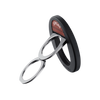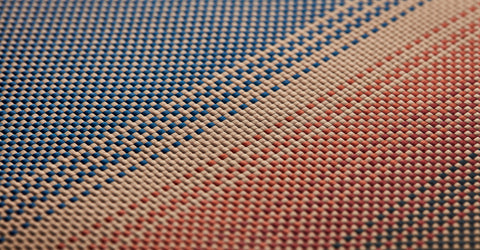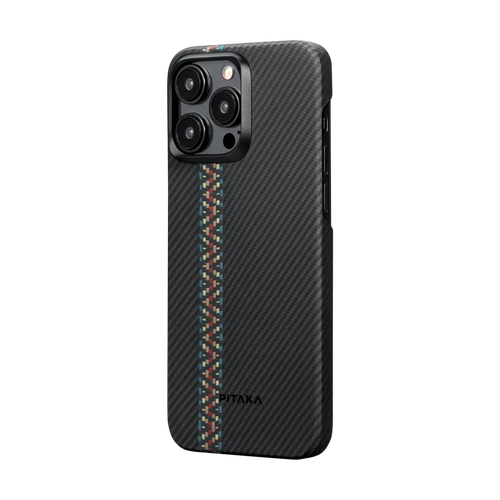According to Encyclopaedia Britannica, technology is:
"the application of scientific knowledge to the practical aims of human life or, as it is sometimes phrased, to the change and manipulation of the human environment."
For technological innovation, there should be a combination of three things: need, resources, and skills, and a society that is open to change.
So, for advances in technology to actually happen, society must be consciously aware that there is a need for it (or perhaps we are persuaded that there is).
We’re now experiencing the ‘fourth industrial revolution,’ a fusion of Artificial Intelligence (AI), the Internet of Things (IoT), robotics, and other emerging technologies. While it's impacting us socially, it’s also disrupting existing industries.
For the most part, technology has dramatically improved every aspect of our lives. However, some technological innovations make us question how technology has changed our lives for the good and the bad.
The areas of focus are:
1. Technology Has Changed How We Work
Technological advances in agricultural machinery and factories led to the Industrial Revolution, turning work previously done by hand into mechanized mass production. More food was made to feed the increasing population, cheaper materials could clothe the masses, and steel could be made on a scale never seen before.
The Industrial Revolution
Inventions such as the steam engine and spinning jenny had a radical impact on many industries, including paper, cotton, and flour. These innovations meant high-demand products were available on a larger scale. However, this technological progress forced people to move from the countryside into cramped cities to over-work and suffer extreme hardships.

Replaced by Robots
In the modern-day, as information technology and machines become even more capable of doing humans' jobs, there's less need to employ people in factories, especially in manufacturing. The increasing use of robots has created the 'displacement effect,' affecting how much factory owners are willing to pay a human to do the same job (clue: it’s less than before).
A study made by MIT estimates that between 1990 and 2007, around 400,000 jobs were lost to automation in US factories.
2. Food Technology Has Changed Our Lives
With approximately 7.5 billion people globally, it makes sense that machines should do specific manufacturing processes to feed our ever-increasing population. Machines ensure quality and affordability, improve productivity, and lower the price of keeping food fresh. Robots are also used for dangerous jobs, such as butchery to reduce work-related injuries.
Canning
In the 19th Century, French innovator Nicolas Appert helped Bonaparte feed his armies due to his canning invention. It led the way to the mass production of preserved goods, cereals, and crackers.
Freezing
Large-scale fresh food manufacturing took off in the 1910s. With refrigeration technology and railroads, farmers could deliver relatively fresh iceberg lettuce all over the USA from California. As refrigerators became commonplace by the 1920s and 30s, and with the introduction of plastic wrapping, American entrepreneur Clarence Birdseye began freezing fresh foods making convenient meals for the everyday consumer.
Additives and Fast Food
We've been putting additives in our food for thousands of years. The Ancient Egyptians used saffron to color food, while the Romans added alum (an antiseptic) to bread to make it whiter. However, the increase of food preservation processes also brought about the fast-food industry.
During the 1950's 'fast-food boom,' salt and sugar were liberally added to food to improve taste and extend shelf-life. An increase in oil crops meant restaurants could fry food to enhance flavor and texture, while wheat was bleached to enhance its visual appeal. Over time, we've discovered that consuming these nutrient-lacking foods can cause all kinds of health issues, including obesity, cancer, and diabetes.
Food Tagging
One of the more recent advances in technology in food tech is 'tagging.' Tagging allows manufacturers to track their products' supply chain from the factory to the store. This is especially beneficial for local farmers and sellers who promote their exceptionally fresh products.
3D Printing
UBEREats may not be in space yet, but NASA has utilized 3D printing to create delicious, cheesy pizza for their astronauts to chow down on during crewed missions to Mars. While some may consider this a frivolous use of money, I think this is a million dollars well spent.

3. Technology Has Changed How We Travel
Only a hundred years ago, people still relied heavily on horses and carriages to get around locally. Traveling further meant spending weeks onboard ships to cross the ocean. The invention of the steam train allowed people from all walks of life to travel the country simply for fun. From the motorcar to space travel, we've been able to explore further than ever before.
Self-Driving Cars
Self-driving cars are powered entirely by electricity. While batteries give off some emissions, it's much less than petrol or diesel, making them substantially better for the environment.
While our roads aren't quite swarming with self-driving cars yet, they are making our roads safer. Human error causes 90% of traffic accidents. Flights are currently the safest travel method, as pilots only control a plane for around 3-6 minutes.

Although driverless cars are considered safer due to machine-learning algorithms, there's a larger moral question about allowing computers to make human decisions. We accept that there are risks when driving, but we also assume that drivers are responsible for their actions. When cars are in control, who takes legal responsibility if something goes wrong?
In 2018, the first fatal accident occurred after an autonomous car with a safety driver hit a cyclist. Uber temporarily took their vehicles off the roads, but the driver was prosecuted for negligent homicide.
4. Technology Has Changed How We Communicate
In 1840, the first stamp, the Penny Black, revolutionized the way people communicated. The stamp made letter sending more convenient, safe, and affordable for ordinary folk. However, it was the arrival of the telegraph and then the phone in the early 20th century that allowed people to communicate much faster and over longer distances.
Smartphones and Messenger Apps
Gone are the days of letter writing and telegraphs, and with SMS and messenger apps, speaking on the phone is rare for many people. Smartphone users in the US said they are five times more likely to text than to call.
Texting is more convenient and accessible. We can send or respond to a message whenever we like, with a single word, emoji, or GIF. People find texting less stressful without dealing with awkward pauses and disapproving 'tones' from the other end of the line.
Video Calling
Although video calling has been around for a while, over the last 18 months, we’ve relied heavily on Zoom to keep us sane and in touch with family and friends. This communication technology allows us to do everyday things like watch movies, take classes, and chat without being in the same room.

PITAKA MagEZ Stand for tablets
While it's less formal, convenience tends to be king of communication these days. However, something can be said about how we communicate when we write letters, use the phone to talk, or at some point, actually see people again, and what we've lost by not doing it.
5. Technology Has Changed Healthcare
With the invention of anesthesia and antiseptics in the 19th century, death rates during surgery decreased substantially. Since then, technology has advanced throughout the 20th century, making breakthroughs to cure disease, prolong life, and alleviate pain.
Medical Inventions
Polio, a disease that affects the nervous system, was the most feared virus in the first half of the 20th century. A mechanical respirator, known as the iron lung, was invented in 1928 to treat polio, while the first pacemaker appeared in 1936. The portable defibrillator was used in 1965 in Belfast, Northern Ireland, followed by the first artificial heart transplant in 1982.

3D Printing Body Parts
Technology initially used in a different field is now being utilized by the Healthcare industry. 3D printing is creating synthetic skin and prosthetics and models for practicing procedures. In 2019, researchers at the Rensselaer Polytechnic Institute in New York devised a method of printing live skin with working blood vessels for burn patients.
A.I. Treatment Plans
Artificial Intelligence is producing new drugs and treatment plans for patients and performing repetitive and laborious tasks, allowing doctors and nurses to spend more time with patients. In 2015, Atomwise used AI to find new drugs that would treat the ebola virus, while UK-based Babylon Health uses AI to pair patients and doctors for 24/7 online consultations.
Recent advances in nanotechnology and robotics allow surgeons and doctors to assess patients in a less invasive way. With medical technology such as the PillCam, a doctor can control the tiny camera to examine the colon instead of using more intrusive methods.
Technology has improved our health for the better, as demonstrated clearly by the average life expectancy that increased from 31 in 1900 to 78.87 in 2019.

Increasing Food Allergies
Conversely, science suggests that we may be leaving younger generations open to more food allergies due to improved hygiene. This change is seen more prominently in Australia and the UK, where food allergies in children have increased by up to 9%.
Affect of Digital Technologies
Overusing technology also adversely affects our physical and mental health and can negatively impact children’s and young adults' development. According to studies, social networking sites can produce feelings of isolation, depression, and anxiety in teenagers (although positive interactions have the reverse effect). Digital technologies can also cause eye strain, bad posture, affect sleep, and obesity from a more sedentary life.
6. Technology Has Changed How We Spend Money
Technology has given us far more independence over our own money. We can shop online, track our spending, and even trade stocks with a tap of a button.
We're an almost 'cashless' society, opting for the convenience of using credit cards and mobile devices to make payments. We no longer need to go to a bank or post office to pay for a bill; we simply open up our banking app and set up a payment.
However, with the decline of physical money, for some, overspending is much easier. We place more value on money when we have physical cash in our hands, making it more difficult to spend $100 in cash than paying the same amount with a card or online.
The further we get from our money, the less we think about how much we're spending. The more technology we use, the fewer people value money. Technology enables us to spend more and save less.
7. How Technology Has Changed Dating
While the 'dating scene' has changed dramatically over the last 100 years, technology has made dating more convenient, less time-consuming, and more efficient. No longer do you meet the love of your life because Papa's business partner has an eligible daughter. Online dating has given us more choices and allows us to meet like-minded people we would otherwise never have met.
In 1965 two Harvard students used an IBM 1401 to match couples based on similarities in a social experiment named 'Operation Match.' Considered to be the US’s first computer-aided dating service, applicants answered 75 very non-scientific questions. Then after a three-week wait, they would receive their top 6 matches. Although the fad ran out quite quickly, it was considered a success by makers Tarr and Crump.

With the advent of the internet, people began using chat rooms (You've Got Mail, anyone?) for romance. Now, apps like Tinder, Bumble, and Grindr, allow people to network and meet up with others who live locally. However, some argue that with the large choice of potential matches available, finding someone to go on a serious date with is even more difficult than before.
8. Technology Has Changed Shopping
We can now buy almost anything online, from our groceries to home appliances. If you have a busy lifestyle or are housebound, whacking everything into a cart and clicking 'buy' is a lot more convenient. Online stores never close, so if you fancy shopping for a new wireless charger at 1 am, you can. There are no crowds or obnoxious salespeople, but there's also no way to try before you buy or get an idea of the product's quality.
Buying online has had a significant impact on high-street stores, which are moving online instead of having brick-and-mortar stores. Some may argue that removing the physical experience of shopping also takes away a sense of community that existed in bygone days.
9. Technology Has Changed Education
Since the 1970s, students have been researching and learning using database systems and, later, search engines. Online video courses are now one of the more popular ways to learn from world-wide based experts. Millions of people are using online learning platforms such as Udemy, Lynda, and Skillshare.
Ebook readers, such as Kindle and Kobo, deliver brand new reading material instantly to your device, aiding those who can't access paper copies or libraries. They’re lighter in weight than a physical book, and with generous storage, you can carry more than 15000 books with you!
Other media, like audiobooks and podcasts, also allow us to absorb materials much faster while doing other tasks like chores or exercise.
Due to COVID-19, new ways to educate were necessary, with teachers and students turning to the virtual classroom.

While older students find the swap works well for them, younger learners aren't so lucky. Without social interactions with their peers and teachers, many children lose motivation and the self-discipline to study. In the long term, it may also harm social skills and development.
10. Technology Has Changed Entertainment
By the early 1960s, most US households owned a TV. It is still considered one of the most notable technological advancements of the 20th century.
Fifty years later, Netflix launched its first online streaming platform in 2008. Since then, numerous other services have arrived on the scene, from Hulu to niche movie and TV platforms, such as Shudder and BritBox.
Napster, a P2P file-sharing network, only lasted two years before getting shut down in 2001, but it revolutionized how people viewed digital content ownership. With the emergence of MP3 people no longer needed to 'own' physical content.
Although there is some fear that online streaming services will be the death of cinema, others suggest it's just an alternative. Not everyone can go to the cinema regularly or feel the need to pay the expensive ticket fee. If you want to watch an overly long comedy in the comfort of your own home at 3 am with your shoes off and a code-compliant snack, you can. Additionally, streaming services give us more opportunities to seek out independent or foreign cinema, which we might not have seen otherwise.
Just like the return of turntables and LPs into the mainstream over the last ten years, cinema will never truly die for die-hard movie-goers.
11. Technology Has Changed Security
We use password encryption, fingerprint scanning, and facial recognition to keep our data secure. Smart home security is becoming ever more popular with companies such as Simplisafe and Ring that incorporate Video Doorbells, Smart Lighting, and Smart Locks. These companies have changed the way home security systems are perceived. Moving from an expensive con to an affordable and convenient DIY system.

Our privacy and safety have been hugely affected by the internet and social media. While we may not be getting burglarized as much, more and more of our personal information is online, making it easier for scammers and identity theft. Children and young people are also more vulnerable to cyberbullying online predators and social posts that will haunt them forever...
12. Technology Has Changed Our Environment
With the growth of intelligent and green technologies, we have more control over how much energy we save and how far we go to protect the environment. Smart devices, such as light bulbs and thermostats, help us conserve energy when we're out of a room or the home.
Media streaming services reduce CD and DVD production and the landfill waste they create. However, this doesn't stop the waste when we throw away existing ones.
Renewable energy technology and sustainable resource management are some of the best ways to save the environment for future generations. Power generation, storage, and energy grids are technologies that we're already harnessing for renewable resources such as wind, solar, and tidal.
Electric cars like Tesla are 'greener' and often cheaper to run, perform better, and soon more affordable than combustion engine cars. With no carbon emissions, battery-powered vehicles don't emit harmful exhaust fumes, reducing the CO2 'crisis' damaging the environment.
With Great Tech Comes Great Responsibility
Technology has improved every area of our life, bringing us convenience, independence, and safety. However, along with advances have come new challenges that affect our lives and society in significant ways that we now have to find solutions to.
PITAKA strives for design and technological innovation while offering convenient and unique products made from cutting-edge materials. Our products aim to simplify the user’s life, improve productivity, and save time and space without compromising style.


















